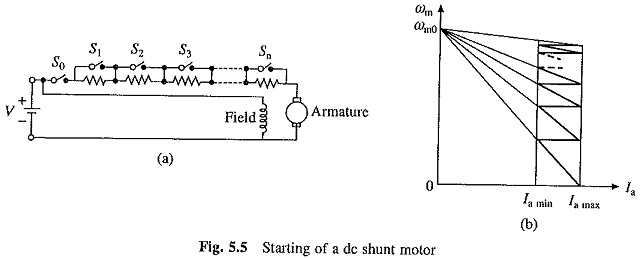DC Shunt Motor Starter Design:
Maximum current that a DC Shunt Motor Starter Design can safely carry during starting is limited by the maximum current that can be commutated without sparking. For normally designed machines, twice the rated current can be allowed to flow and for specially designed machines it can be 3.5 times.
At standstill, back emf is zero and the only resistance opposing flow of current is the armature circuit resistance, which is quite small for all types of dc motors.
If a dc motor is started with full supply voltage across its terminals, a very high current will flow, which may damage the motor due to heavy sparking at commutator and heating of the winding. Therefore, it is necessary to limit the current to a safe value during starting.
When motor speed is controlled by armature voltage control, the controller which controls the speed can also be used for limiting motor current during starting to a safe value. In absence of such a controller, a variable resistance controller is used for starting as shown in Fig. 5.5(a).
As motor accelerates and back emf rises, one section of the resistor is cut out at a time, either manually or automatically with the help of contactors, such that the current is kept within specified maximum and minimum values (Fig. 5.5(b)).
